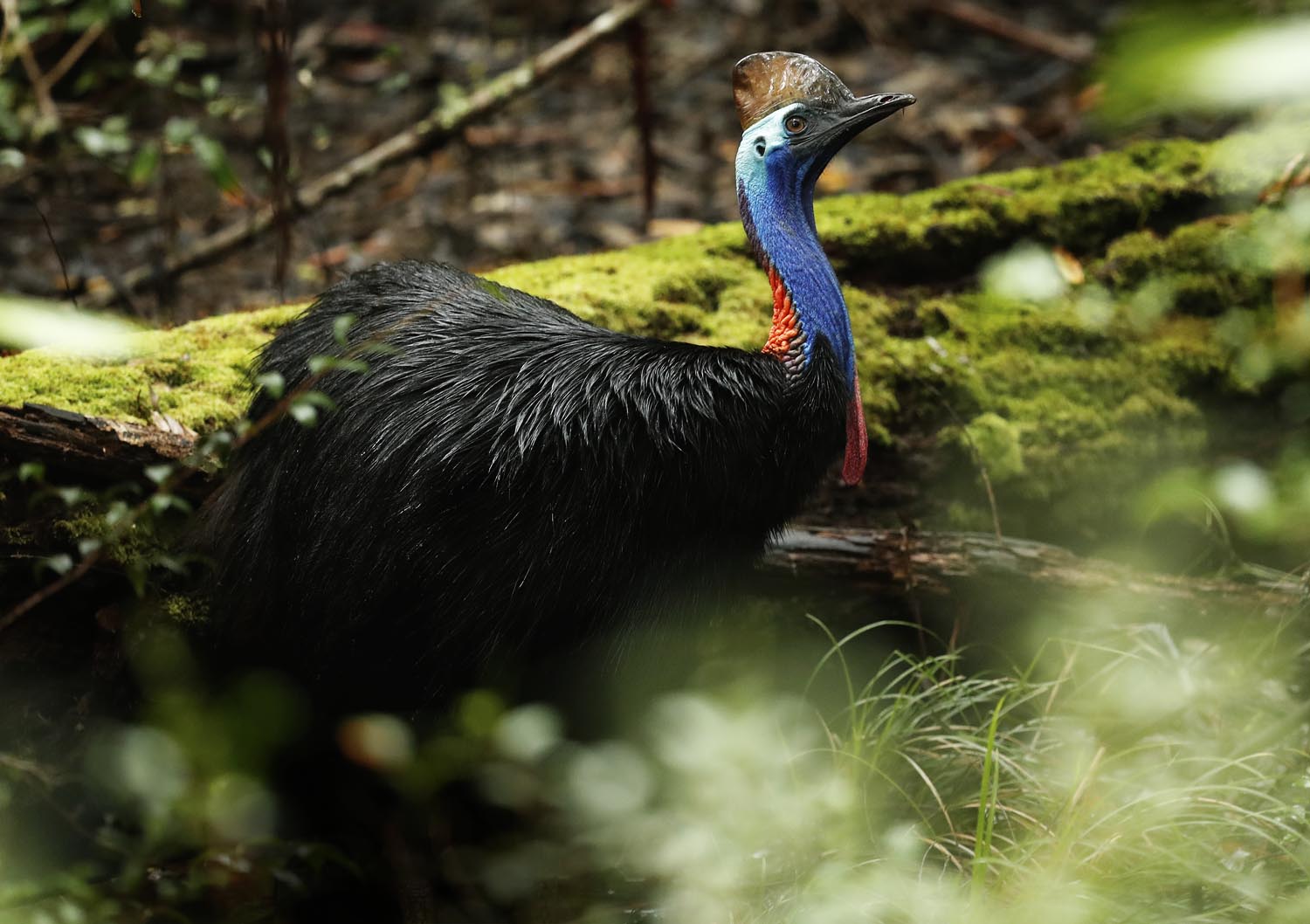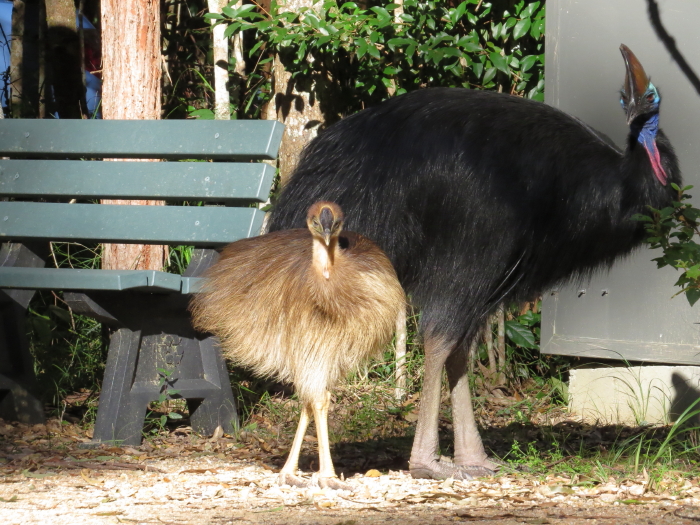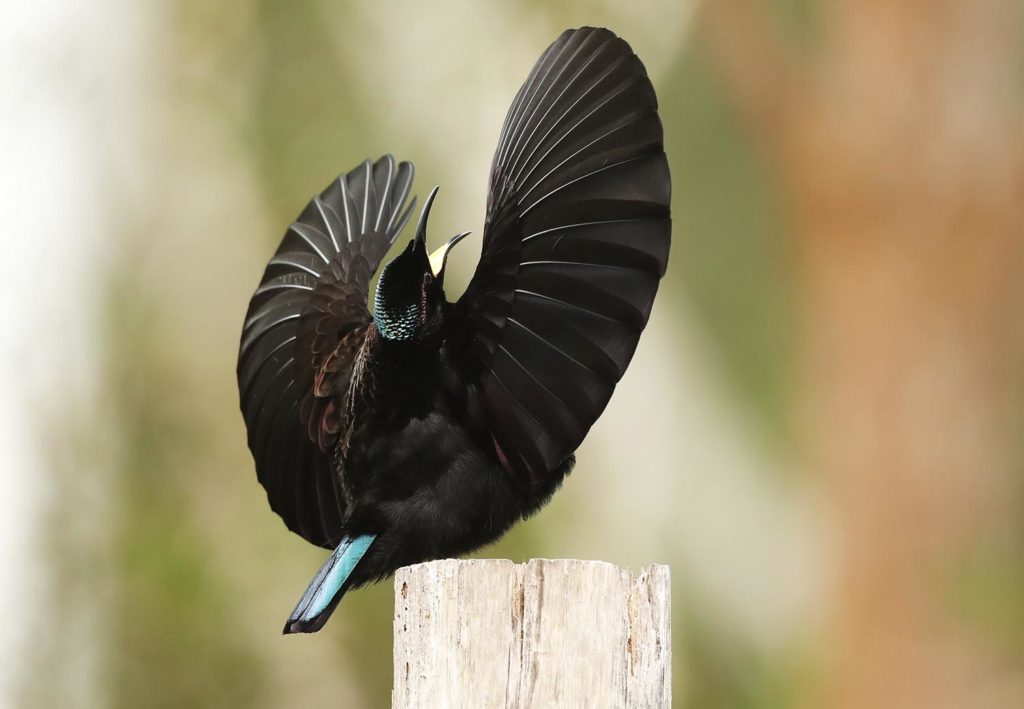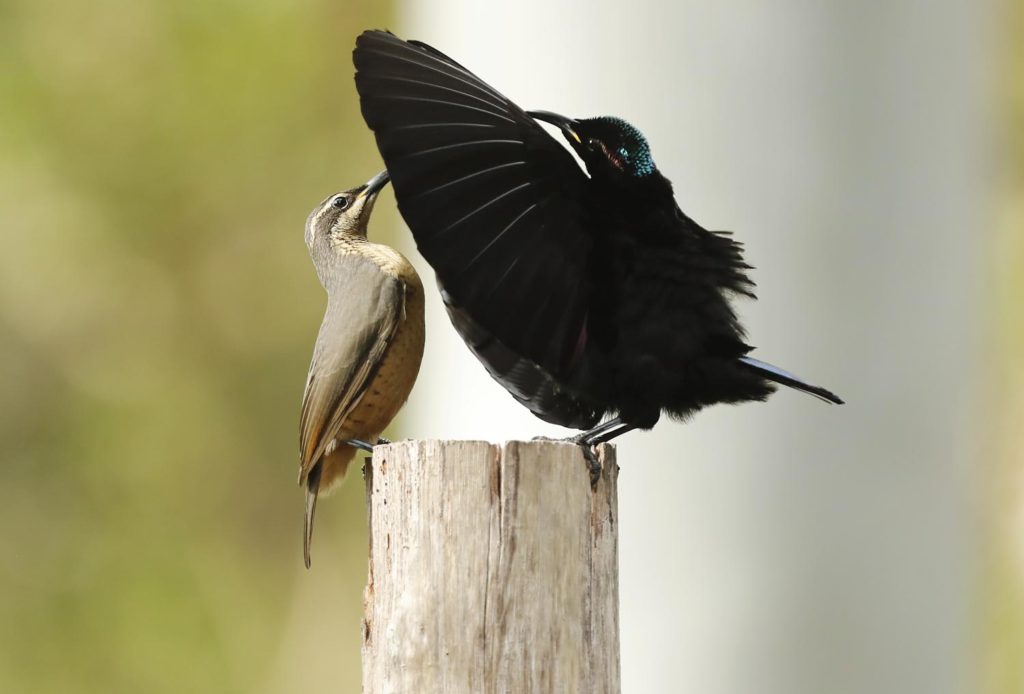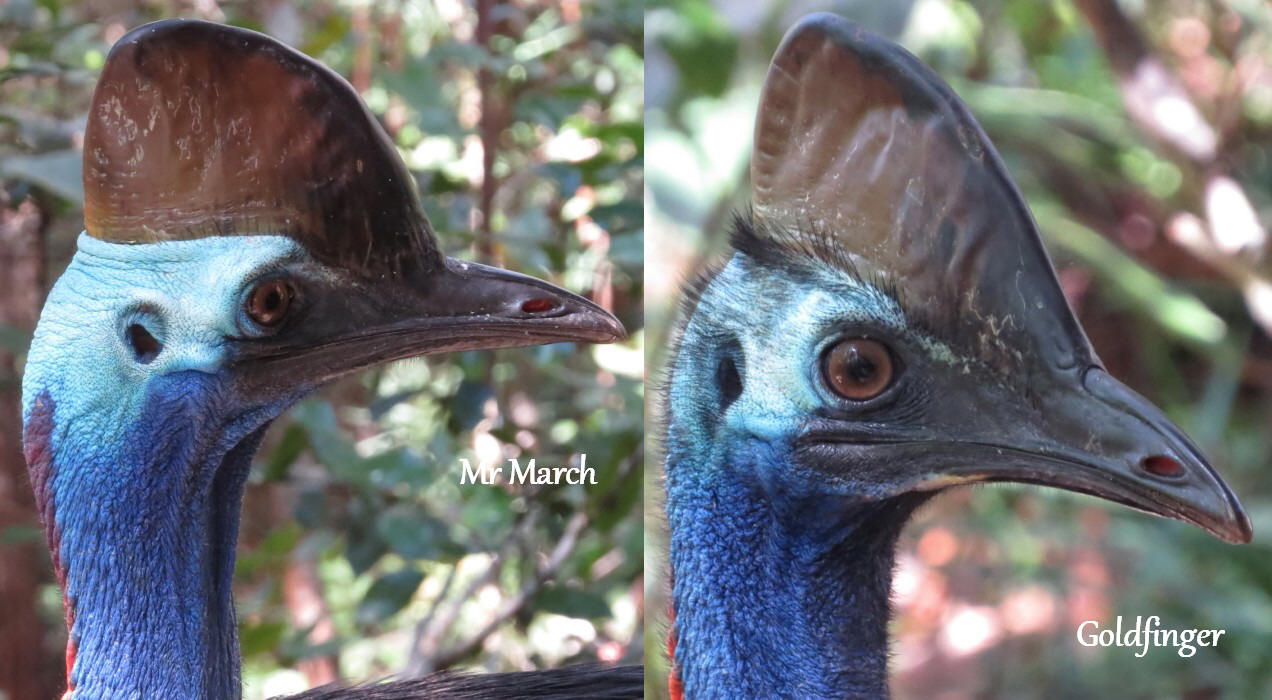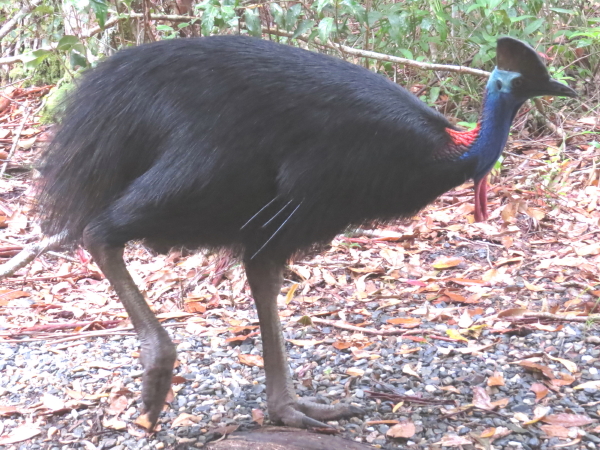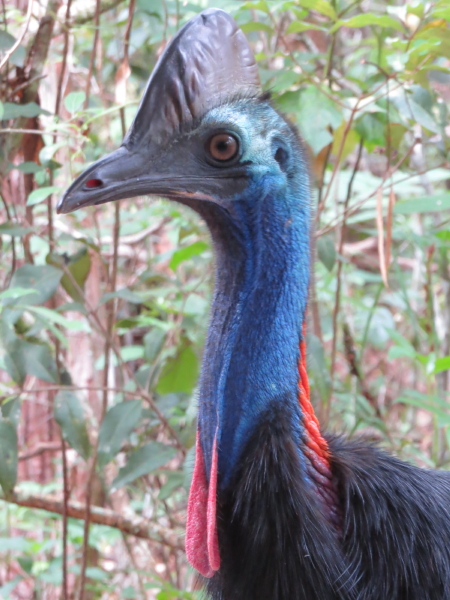
The Turpentine trees have begun to flower, attracting honeyeaters and lorikeets during the day and Little Red Flying Foxes at night. The smaller Symplocos trees are in full bloom and some of our large Rainforest Rock Orchids have just finished flowering.


Several small flocks of Scaly-breasted Lorikeets are coming down from the canopy for a drink at the bird baths and pond.
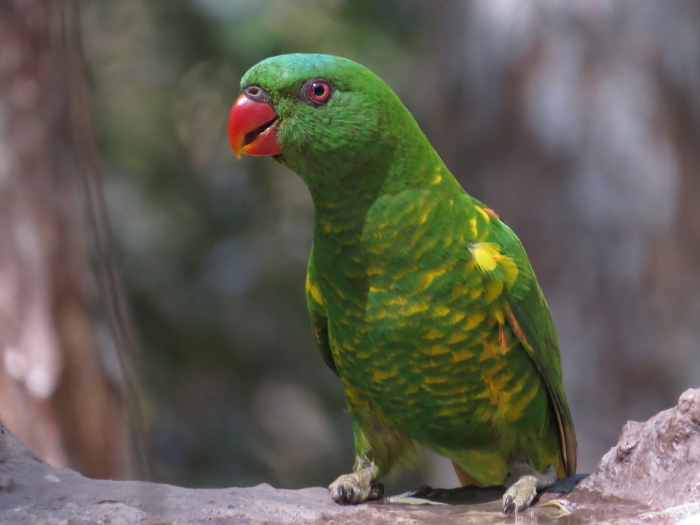
Many Scarlet Honeyeaters are setting up territories and building nests.

White-throated Treecreepers, Rainbow Lorikeets , Macleay’s Honeyeaters, Golden and Rufous Whistlers are among the many other species also breeding now. Spangled Drongos arrived yesterday. Sacred Kingfishers are calling often.

Everyone is very busy and it is difficult to decide where to sit and watch all that activity. Well, I happened to pick a good spot: while others are working hard,

I am sitting on our veranda to write this. A female Lumholtz’s Tree-kangaroo is sitting about 5 metres away from me in a small Acacia, resting and feeding occasionally.

When she eventually turns around, I can see the joey, too .



It is still very small and I am looking forward to see it leave the pouch!

